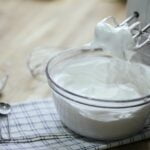FREE SHIPPING OVER $50
Dermatologists Say This Is the Fastest Way to Calm an Eczema Flare

If you have ever experienced an eczema flare-up, you know the feeling of a sudden, overwhelming, and often relentless itch. Your skin turns red, inflamed, and raw, and the burning sensation can make you feel desperate for immediate relief. In those moments, it feels like nothing will work. You might find yourself reaching for one cream after another, all while the itch gets more intense and the flare-up spirals out of control.
But what if there was a way to stop that spiral in its tracks? What if you had a dermatologist-approved plan that could provide rapid, lasting relief? The good news is that such a method exists, and it’s a simple protocol that focuses on getting your skin what it needs most: immediate hydration and protection. This article will reveal the fastest way to calm an eczema flare, the science behind why it works, and how to create a daily skin care routine that can help you reclaim control over your skin and prevent future flare-ups.
The Eczema Flare: Why It’s More Than Just a Rash
Before we get to the solution, you must first understand the problem. An eczema flare is not just a random rash; it is a complex inflammatory response that is tied directly to a compromised skin barrier.
Think of your skin barrier like a brick wall. The skin cells are the bricks, and the lipids (fats like ceramides) are the mortar holding everything together. In healthy skin, this wall is strong and works to keep moisture in and harmful irritants, allergens, and bacteria out. However, with eczema, that wall is leaky and weak. Your skin struggles to hold onto water, leading to the chronic dryness and flakiness that are hallmarks of the condition.
During a flare-up, this compromised barrier allows irritants and allergens to penetrate the deeper layers of your skin, triggering an overactive immune response. This leads to the inflammation, redness, and unbearable itch that can quickly turn into a vicious itch-scratch cycle. To truly stop a flare in its tracks, you must do more than just apply a cream; you must repair the skin barrier itself.
The Dermatologist-Approved “Flash Flood” Method for Rapid Relief
The fastest, most effective way to calm a flare-up is a method that many dermatologists refer to as “Soak and Seal.” The idea is to quickly rehydrate the skin and then immediately lock in that moisture and any medication to repair the barrier. This process provides a powerful “flash flood” of hydration and a protective seal that can provide significant relief in just minutes.
Step 1: The Warm Soak
Start by taking a short, warm bath for about 10-15 minutes. Avoid using water that is too hot, as this can strip the skin of its natural oils and make the problem worse. The goal here is to rehydrate the skin from the outside in. You can add a colloidal oatmeal bath treatment to the water, which is a dermatologist favorite for its soothing properties that can help reduce the itch and inflammation. Do not use harsh soaps, bubble baths, or scented products during this time.
Step 2: Pat Dry (Don’t Rub!)
As soon as you step out of the bath, gently pat your skin dry with a soft towel. This is a crucial step. Do not rub your skin dry, as this can cause friction and further irritation. You want to leave your skin slightly damp, as this is when it is most receptive to absorbing products. The moisture on your skin is the secret ingredient that makes the following steps so effective.
Step 3: The “Flash Flood” of Medication
While your skin is still damp, apply any prescribed topical medication to the inflamed areas. A prescription topical steroid is often the fastest way to get inflammation under control, so be sure to use it as directed by your doctor. For less severe flares, an over-the-counter hydrocortisone cream (1%) can also provide temporary relief from the itch. This step is about getting the powerful, anti-inflammatory agents onto your skin as quickly as possible.
Step 4: Lock It In with a Thick Moisturizer
This final step is non-negotiable and is perhaps the most important part of the entire process. Immediately after applying your medication, liberally apply a thick, greasy moisturizer or emollient to your entire body (not just the areas with the flare-up). Look for products that contain barrier-repairing ingredients like petrolatum, ceramides, or shea butter. This final layer of moisturizer works as a protective seal, locking in the water from the bath and the active ingredients from the medication. It helps to rebuild your skin’s compromised barrier and prevents further moisture loss.
Understanding Your Triggers: The Long-Term Solution
While the “Flash Flood” method can stop a flare in its tracks, a truly effective eczema management plan requires you to understand your triggers. A trigger is anything that can cause your eczema to flare. Identifying and avoiding these triggers is the key to achieving long-term relief and reducing the frequency of flare-ups.
Common Environmental Triggers
Dry air, especially in the winter, is a major trigger because it draws moisture out of your skin. Using a humidifier in your home can help. Allergens like pollen, dust mites, and pet dander can also set off an inflammatory response.
Irritating Skincare and Household Products
Many common products contain ingredients that can irritate eczema-prone skin. Fragrances, dyes, and harsh soaps are the most common culprits. Pay close attention to the labels on your laundry detergents, fabric softeners, soaps, and even shampoos. Switch to hypoallergenic, fragrance-free products whenever possible.
Other Factors
Believe it or not, stress and sweat can also be significant triggers. High stress levels can lead to an increase in cortisol, a hormone that can weaken your skin barrier and trigger inflammation. Similarly, sweat contains substances that can irritate sensitive skin, so it is important to rinse off and moisturize after a workout.
A Daily Skincare Routine for Eczema-Prone Skin
Managing eczema is not just about reacting to a flare-up; it is about being proactive with a gentle, consistent daily skin care routine. By consistently supporting your skin barrier, you can significantly reduce the severity and frequency of future flares.
1. Gentle Cleansing is Key
Choose a mild, soap-free cleanser that is specifically formulated for sensitive skin. Use lukewarm water and avoid scrubbing. Remember, the goal is to gently cleanse the skin without stripping it of its natural, protective oils.
2. Moisturize, Moisturize, Moisturize
This is the single most important part of your daily routine. Apply a thick moisturizer at least twice a day, or more if your skin feels dry. The best time to moisturize is right after you get out of the shower or wash your hands, when your skin is still slightly damp. Keep a travel-sized tube of moisturizer with you so you can reapply throughout the day.
3. Consider an Emollient as a Top-Up
For particularly dry areas, consider using an occlusive ointment (like petrolatum) to create an extra layer of protection. These products are excellent at preventing moisture loss and can be applied over your daily moisturizer on especially dry patches.
4. Talk to a Professional
Finally, always remember to consult a dermatologist. They can help you identify your specific triggers through patch testing and can provide a personalized treatment plan that may include prescription medications. These experts are your greatest allies in the battle against eczema.
Conclusion
Living with eczema can feel like a constant battle, but it does not have to be a source of endless frustration. By understanding the science behind your condition and having a clear, actionable plan, you can take control. The “Flash Flood” method is the fastest way to get relief during a flare-up, but a consistent, gentle daily skin care routine and a proactive approach to managing your triggers are what will give you the long-term, lasting comfort you deserve. Remember, your skin is a sensitive organ that needs consistent care and protection. Give it what it needs, and you can achieve a level of comfort you may have thought was impossible.
Related Articles
- 8 Everyday Habits That Are Secretly Aging Your Skin After 50—Dermatologists Reveal What to Stop Now
- Dermatologists Reveal 10 Skin-Damaging Habits Women Over 40 Make Without Realizing
- Thinning Hair? This Science-Backed Solution Is Helping Thousands Regrow with Confidence
- B Vitamins Could Be the Missing Link to Better & Longer Health—New Research Reveals Their Hidden Power
- Scientists Are Buzzing About This Tea + Vitamin Duo That Rejuvenates Aging Brain Cells







